Balsamic glaze is simply a balsamic reduction: Just simmer balsamic vinegar until the sweet and tangy flavors concentrate. Glaze is thicker than vinegar, irresistibly rich and delicious. Just a drizzle adds a restaurant-quality flair to roast vegetables, meat, salad, or even strawberries and vanilla ice cream!
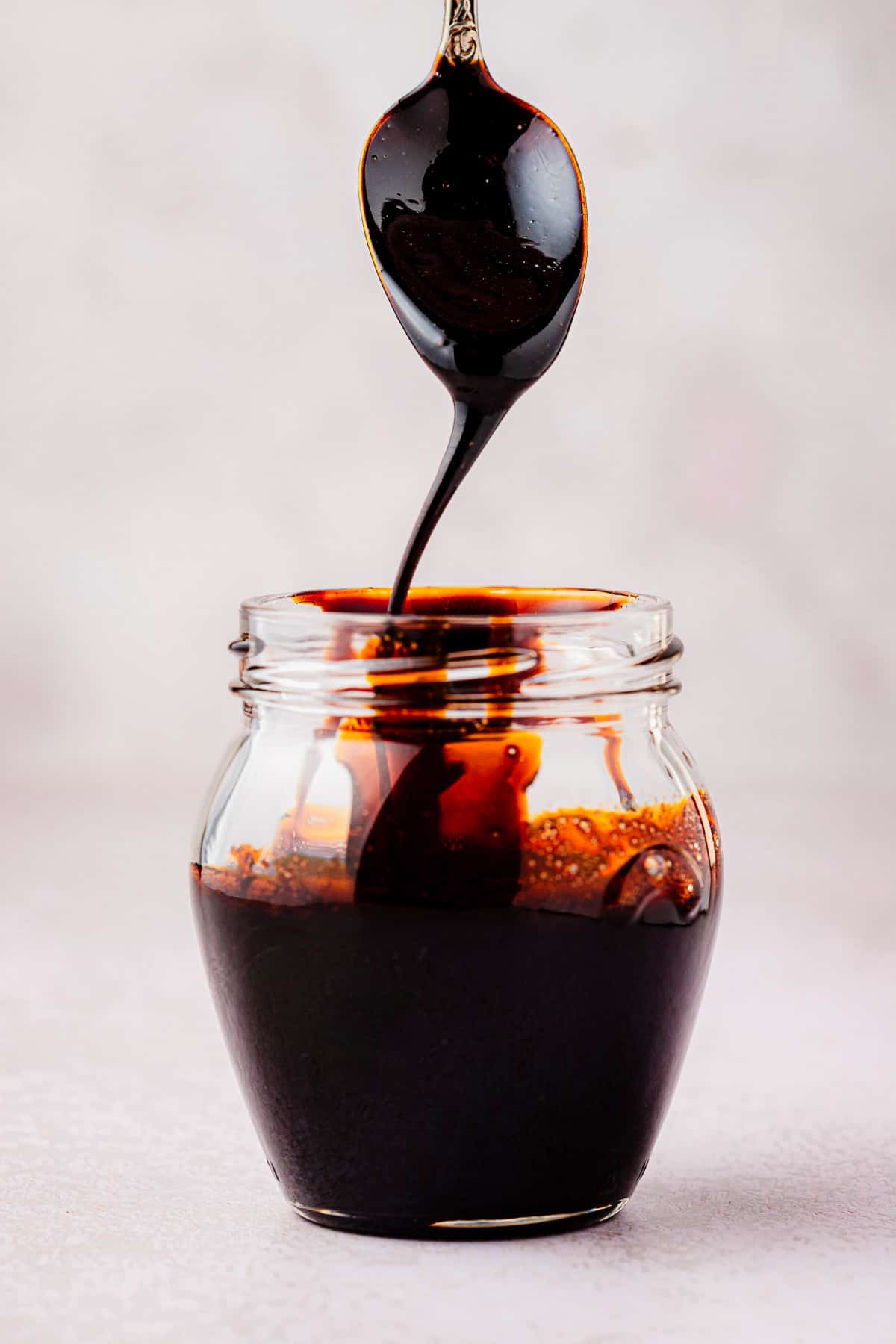
Condiments that take food from basic to bold in seconds are an easy way to build big flavor quickly. That’s balsamic glaze in a nutshell: Italian balsamic vinegar, a centuries-old ingredient, reduced until it’s singing with a bright, caramelized flavor that coats your palate and leaves you wanting more.
This balsamic glaze recipe is meant to be adjusted according to the vinegar you’re working with. Sometimes balsamic is sweet enough to be left alone, sometimes a little honey or brown sugar goes a long way, like with our Baked Salmon and Skillet Zucchini.
With this easy recipe, you’ll learn how to make a balsamic reduction and adjust according to your taste and the recipe where it’s used. Plus, I’ve included tips for selecting the best quality balsamic vinegar and our favorite ways to use balsamic glaze.
Table of Contents
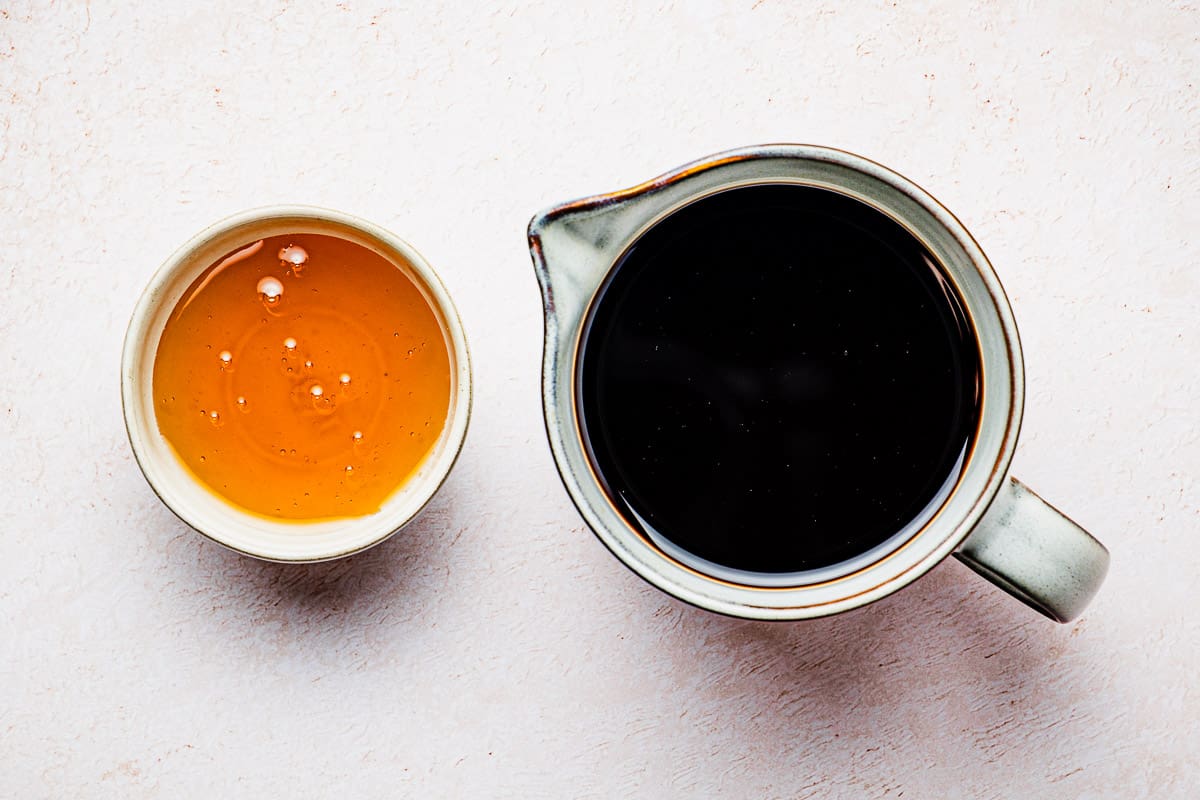
Balsamic Glaze Ingredients
This balsamic glaze recipe needs only one pantry ingredient: balsamic vinegar. It’s as simple as that! Depending on your vinegar, though, you may want to add body and cut the bite with a sweetener.
- Balsamic vinegar: Made from cooked grapes that are aged in barrels, Italians have been producing balsamic vinegar for generations. Balsamic varies greatly in both taste and quality—see my tips for buying balsamic below.
- Sweetener (optional): Concentrating straight balsamic vinegar will often be aggressively tart. I use our Greek honey, which is delicately sweet with savory notes of fresh thyme, so it plays well with the sweet-meets-savory balsamic. Honey also helps the glaze get a syrupy body and adds a sweetness for balance. Sugar, brown sugar, maple syrup, or agave also work well.
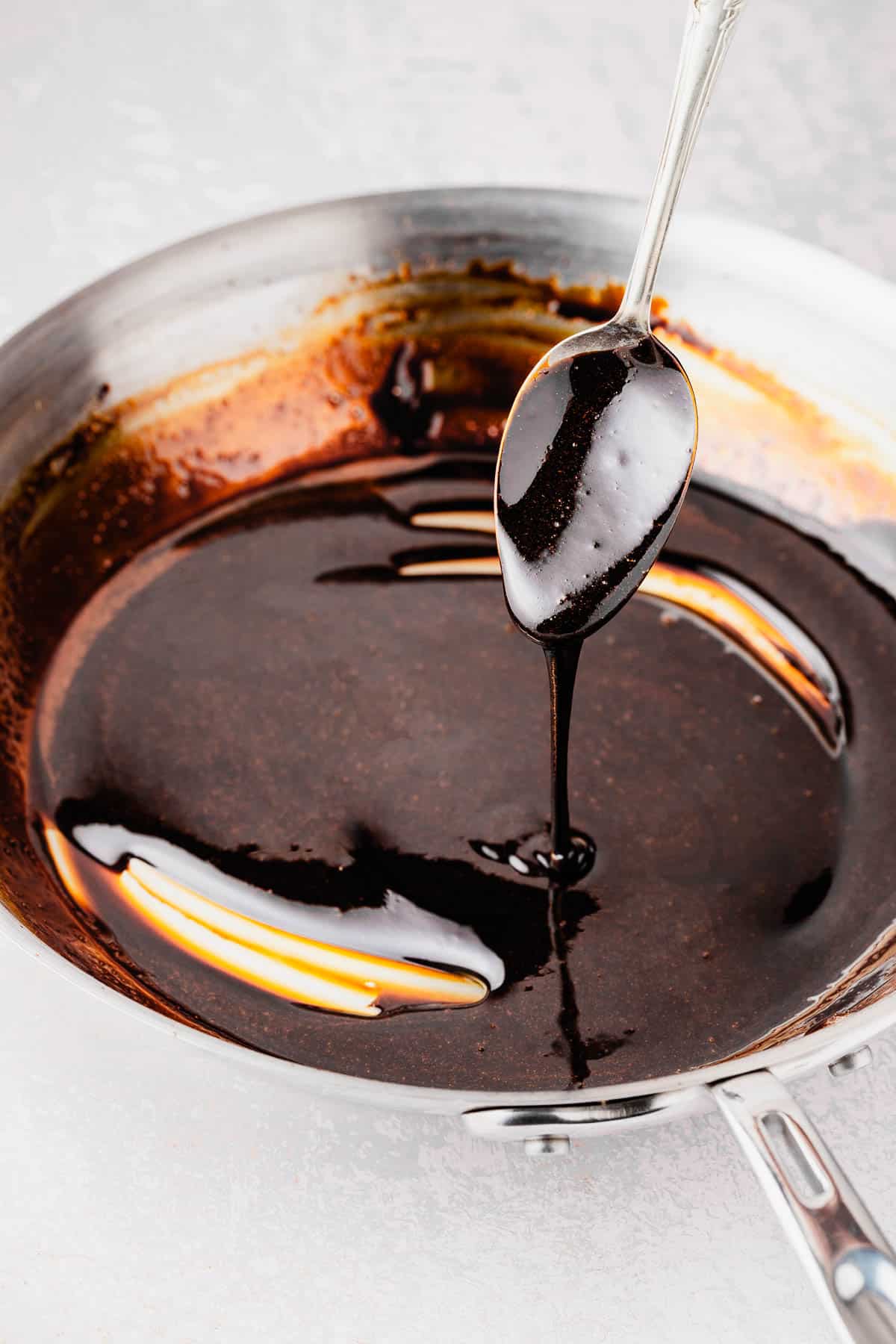
How to Pick the Best Balsamic Vinegar
Some balsamic vinegars are as thick and sweet as honey on their own. Others are watery and quite sour. Both have their place in the kitchen, but you want one that falls somewhere in the middle for a balsamic glaze.
Many will advise you to only buy balsamic from the Italian regions of Modena and Reggio Emilia because they’re more authentic and traditional. While that can be a quick way to make sure you’re at least on the right track, I haven’t found that to be a sure-fire guarantee that you’ll get the best flavor. I also don’t think you need to spend wild amounts of money to get the good stuff.
To buy a high quality balsamic, make sure:
- The ingredient list only contains grapes or grape must, the crushed juice that also has the skins, stems, and seeds.
- Grape vinegar or grape wine vinegar is okay, as long as it’s the second ingredient. This will look something like, “Cooked grape must, grape wine vinegar.” You want a grape must that’s balanced by a touch of grape vinegar, not the other way around.
- Ideally balsamic vinegar should have 0g added sugar, but a few grams isn’t the end of the world.
- Make sure there’s no caramel coloring or similar additives, which is a red flag for a lower quality product.
I’ve found the “total sugars” line to be a better indicator of the sweetness of the balsamic. Around 12 grams per tablespoon is a very sweet balsamic.
If the bottle is clear with enough gap at the top, you can check the viscosity by holding the bottle up to the light, tipping it to the side, and seeing how much it sticks to the top. At the end of the day, you’re going to have to taste to know. Thankfully, you can adjust the sweetener accordingly in everything from this balsamic glaze recipe to salad dressings.
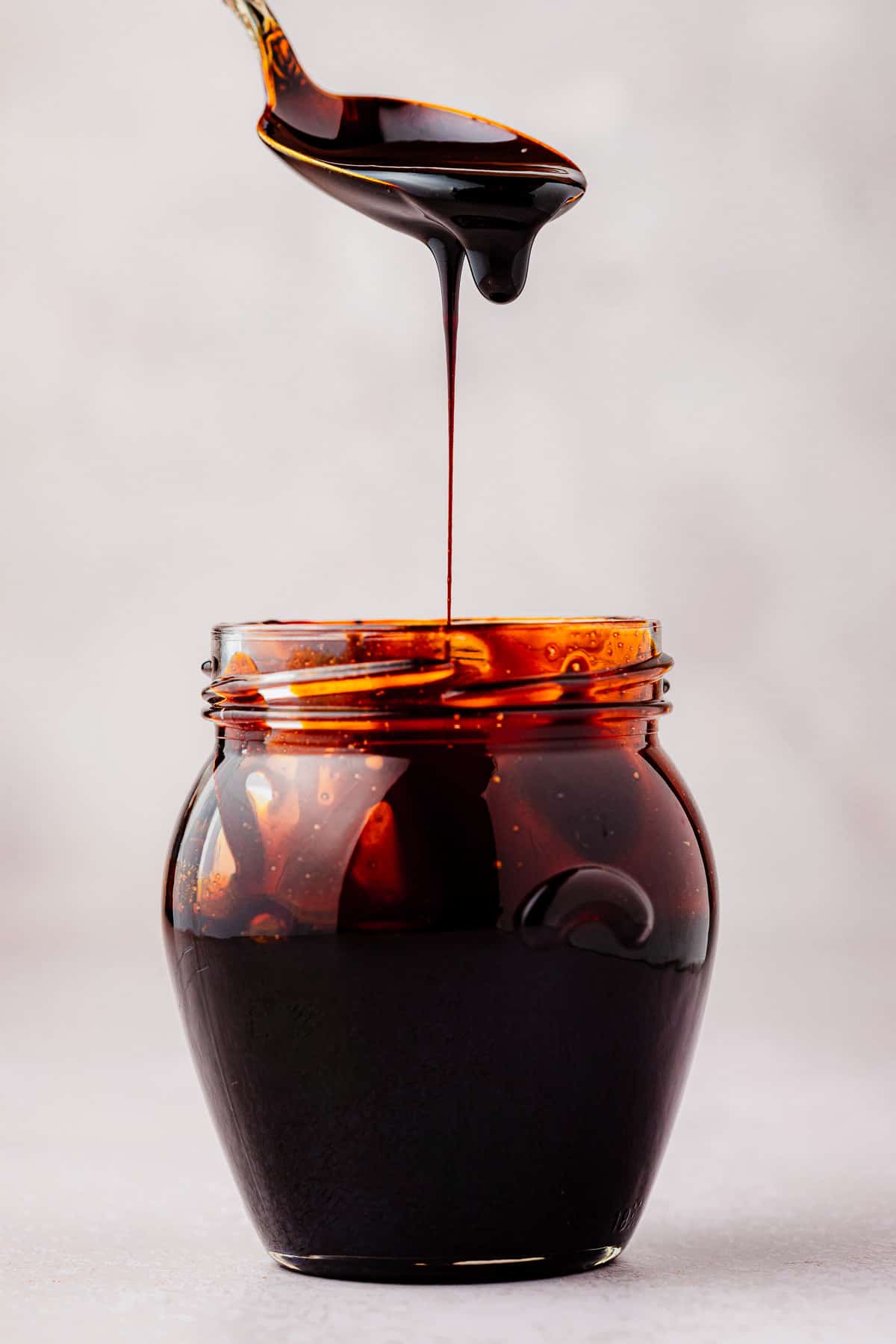
How to Make Balsamic Glaze
The first step to this balsamic reduction is to taste the balsamic. Imagine those flavors concentrated, and add more or less sweeter depending on the acidity lever you’re after. We’ll reduce the vinegar by half, so if you’d like more or less simply double the amount you want to end up with. To make a balsamic reduction:
- Heat the balsamic. In a medium saucepan over medium heat, whisk together 1 cup of balsamic vinegar with your sweetener of choice. I use 1/4 cup of honey, which hits the right note of sweet and tart for me.
- Bring to a boil. Keep an eye on the pan, whisking constantly to prevent scorching. When it comes to a boil, turn the heat down to low to maintain a gentle simmer.
- Simmer. Cook on low, stirring from time to time, until the liquid has reduced by half and it has the consistency of maple syrup. This usually takes 15-20 minutes. Remove from the heat and set aside to cool.
- Use or store. If you’re not using right away, pour into a sealable container or jar. Allow to cool completely, then cover and refrigerate for up to 2 weeks.
Tips for this Balsamic Glaze Recipe
This balsamic reduction recipe is easy, but getting just the right consistency can take some practice. Here are a few tips to make the perfectly syrupy balsamic glaze:
- Runny like maple syrup, not like glue. As soon as the reduction coats the back of your spoon and has a syrupy consistency, remove from the heat. It will thicken as it cools, so it should be more like a warm honey, but runnier than honey out of the jar.
- If you take it a step too far, add a splash of water. Whisk in a few drops of water just before serving to thin if necessary.
- Open a window and turn on your vent. The smell of vinegar cooking is not quite as enticing as garlic or onion. Get some ventilation or your family may start complaining!
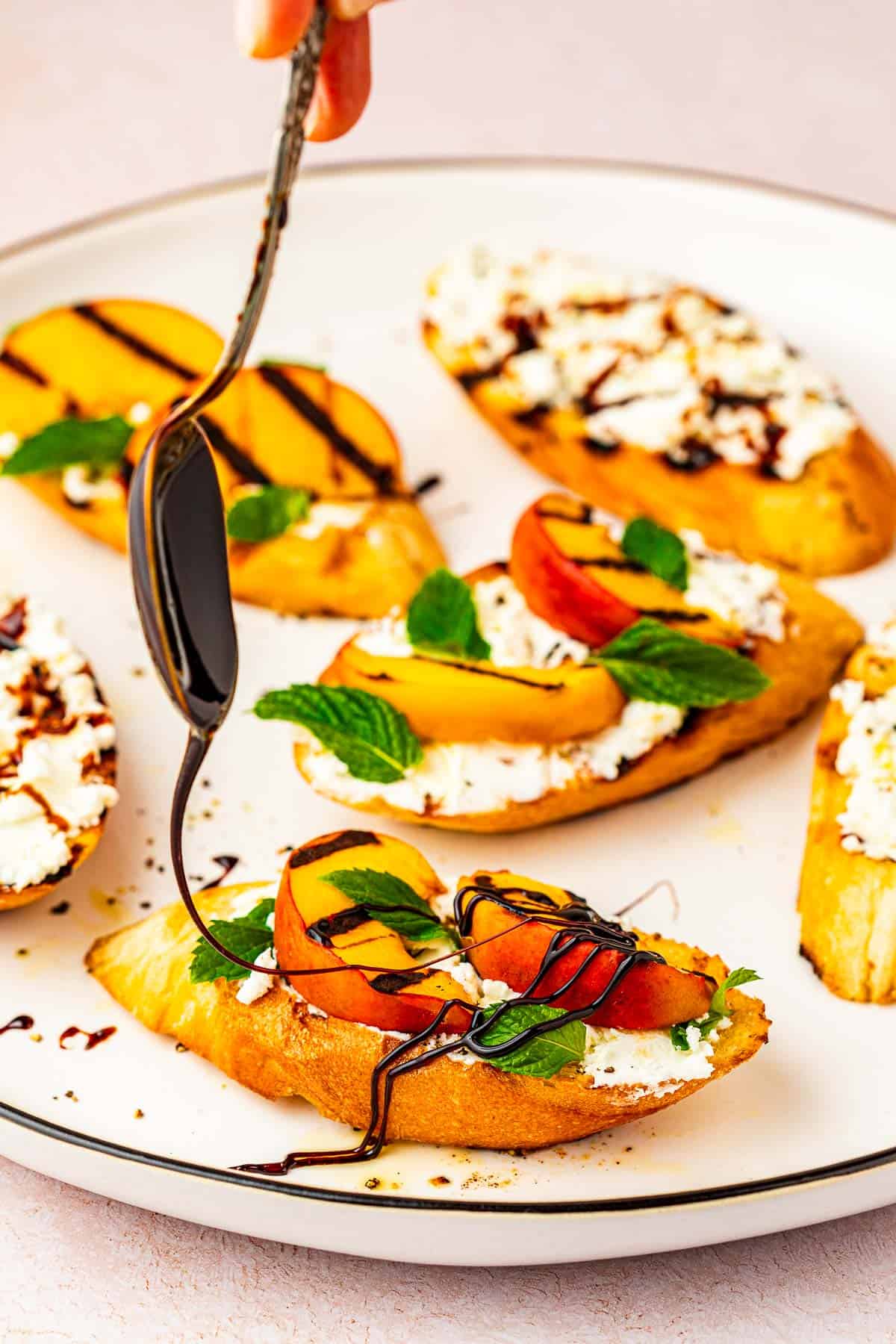
What to Serve with Balsamic Glaze
Balsamic reduction is a wonder condiment: it gives an instant boost to both sweet and savory dishes. Unsurprisingly, it works particularly well with Italian flavors. Drizzle on classic caprese or chicken caprese salad, eggplant parmesan sandwiches, oven-roasted vegetables and more.
For a snack, keep things simple and toast some crusty bread. Spread on a bit of goat cheese, a drizzle of glaze, good Italian olive oil, flaky salt, and cracked black pepper. In the summertime, dress things up with goat cheese, grilled peaches, and torn mint or basil leaves.
If you’re in the market for something sweet, you’d be amazed at how incredible balsamic glaze tastes on top vanilla ice cream. A spoonful of berry compote at the bottom of the bowl and you’re really in business. Or, for a special treat, drizzle a touch on top of freshly baked fig pastry.
Drizzle Balsamic Glaze on These Recipes!
Appetizer and Mezze
Strawberry Tart with Fillo Crust
Appetizer and Mezze
Fig Pistachio Goat Cheese Crostini
Browse all Mediterranean recipes.
Visit Our Shop
Get The Mediterranean Dish Cookbook
More than 120 recipes for bright and flavorful Mediterranean diet-inspired meals.
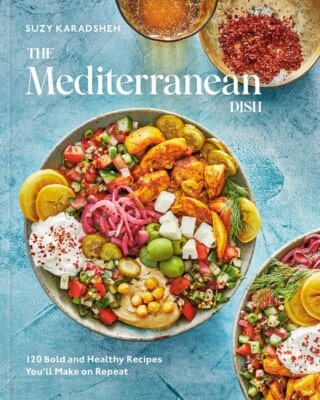
Balsamic Glaze (Balsamic Reduction)
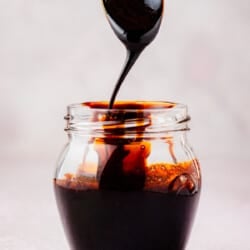
Ingredients
- 1 cup balsamic vinegar
- 1/4 cup honey, optional
Instructions
- Heat the balsamic. In a medium saucepan over medium heat, whisk together the balsamic vinegar and honey (if using).
- Bring to a boil. Keep an eye on the pan, whisking constantly to prevent scorching. When it comes to a boil, turn the heat down to low.
- Simmer. Cook on low, stirring from time to time, until the liquid has reduced by half and it has the consistency of maple syrup. This usually takes 15-20 minutes. Remove from the heat and set aside to cool.
- Use or store. If you’re not using right away, pour into a sealable container or jar. Allow to cool completely, then cover and refrigerate for up to 2 weeks.
Notes
- The glaze will thicken as it cools. As soon as the reduction coats the back of your spoon and has a syrupy consistency, remove it from the heat.
- If your glaze is just a bit too thick, thin by whisking in a few drops of water just before you use it.
- Visit our shop to browse quality Mediterranean ingredients including olive oils, honey, jams and spices.
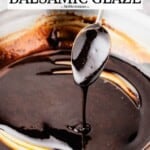
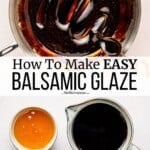
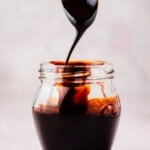
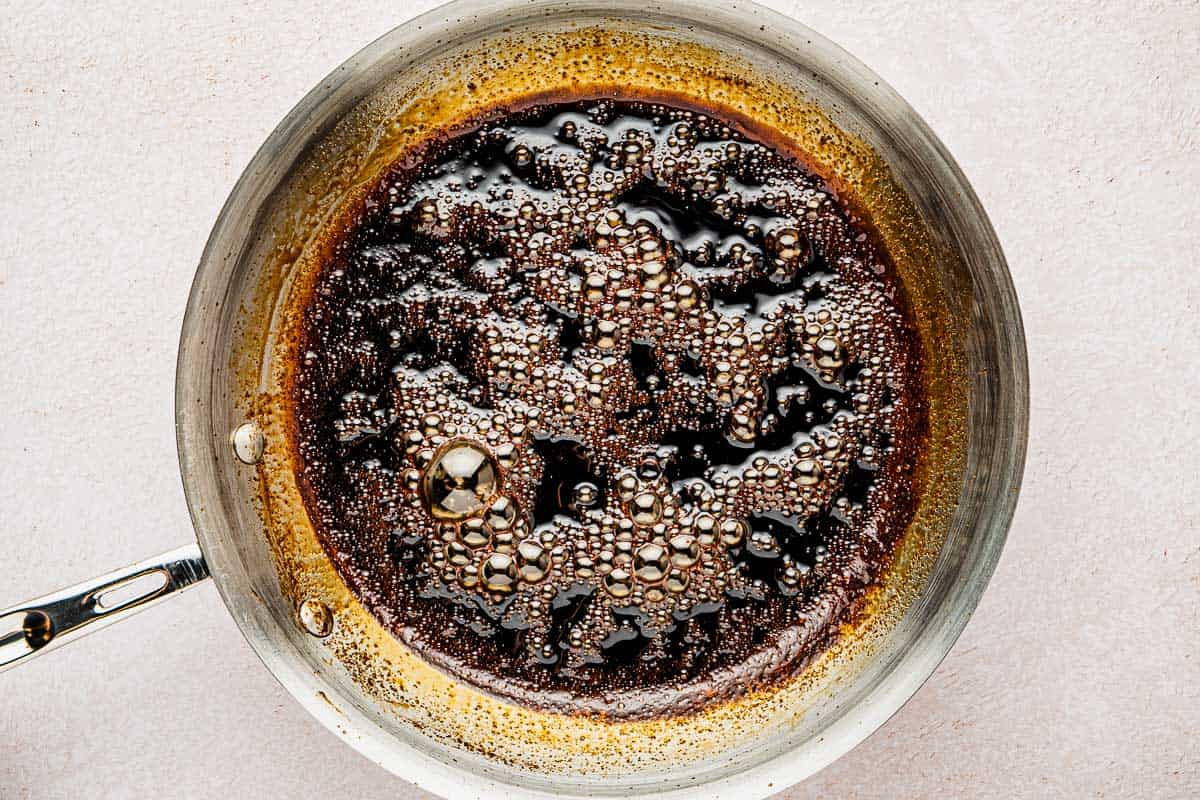
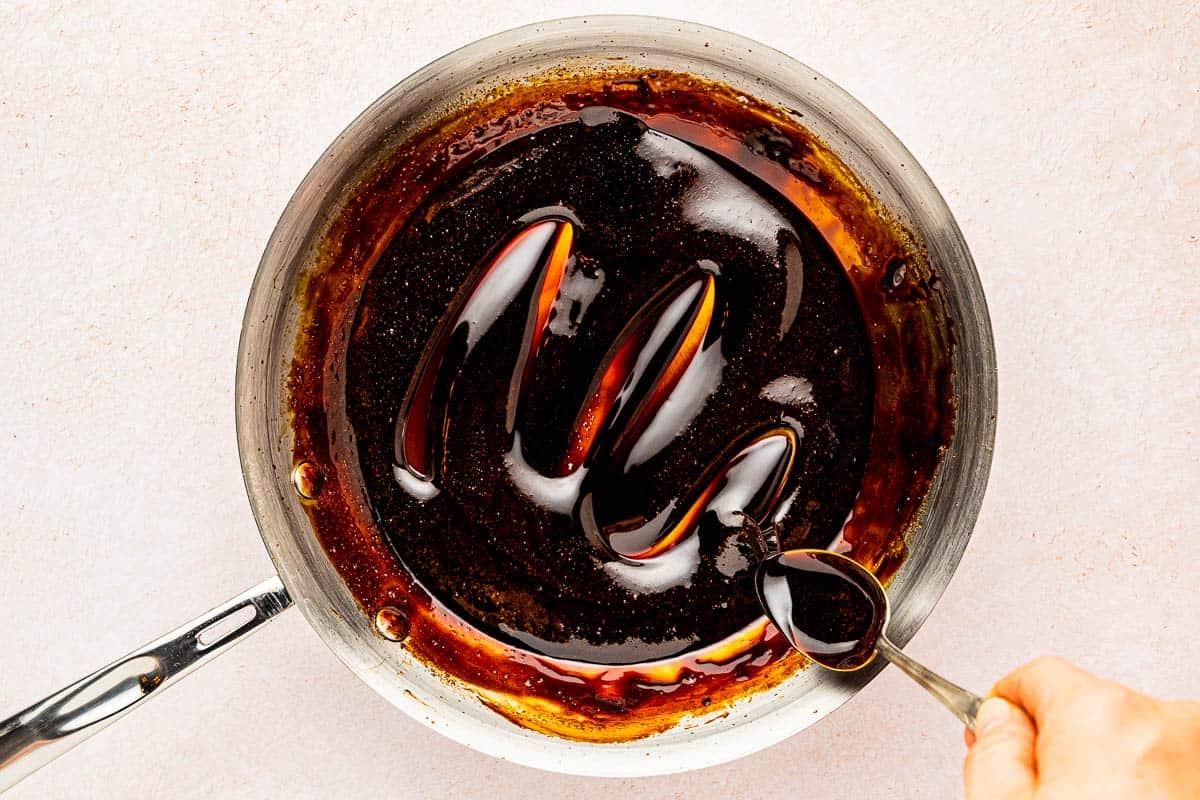
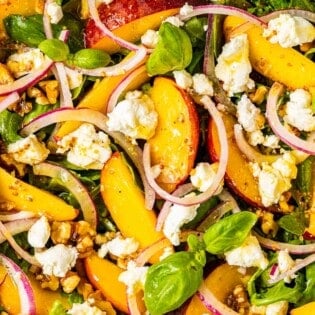
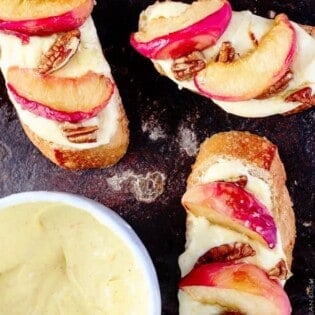
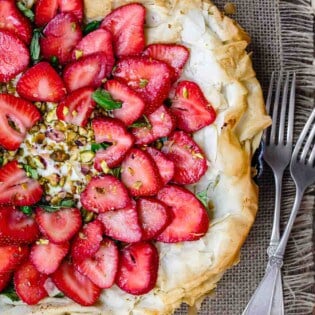
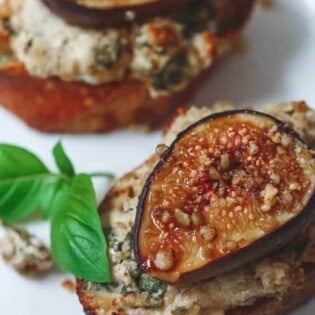
Well I sincerely liked reading it This tip procured by you is very useful for proper planning
Just made this recipe to use for the Balsamic Chicken recipe tonight. I tastes wonderful! I did use honey. It was from my daughters bees.